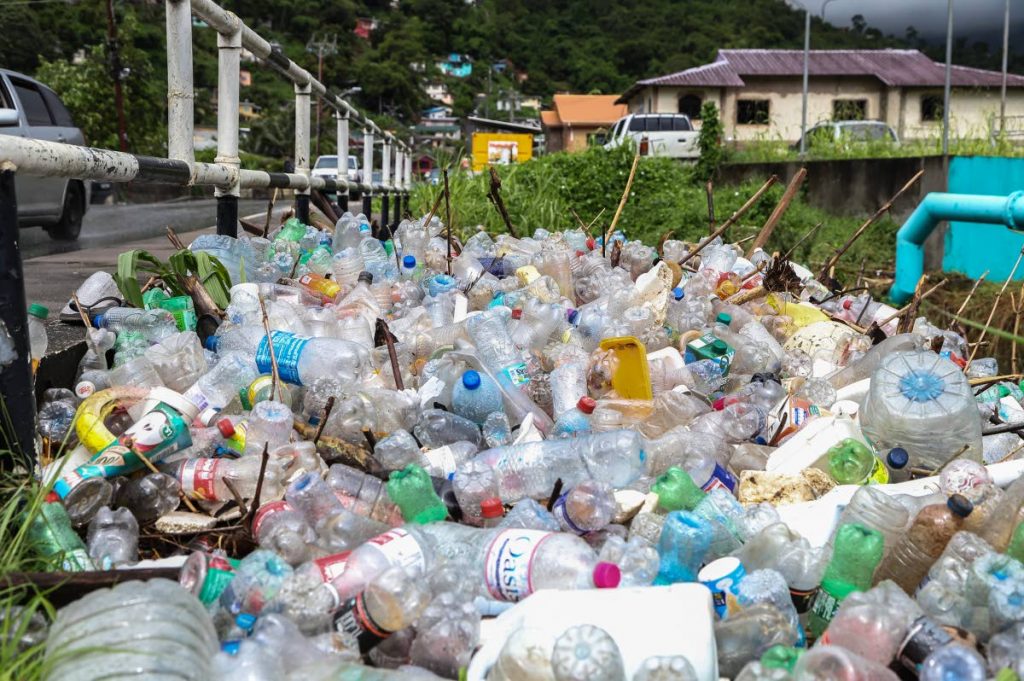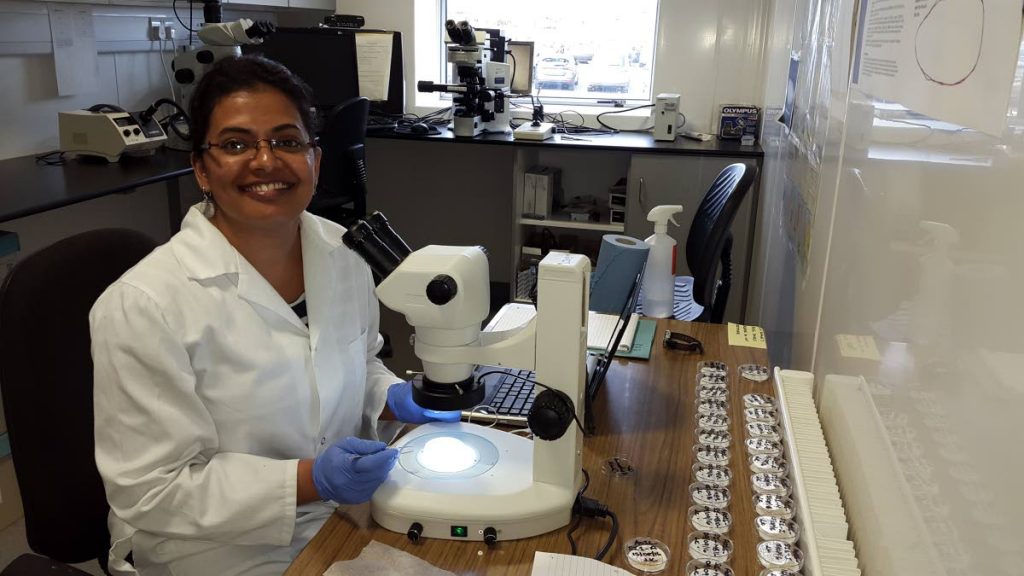Plastic problem from Atlantic to the Arctic

Dr La Daana Kanhai found plastic pollution in every marine environment she’s explored. She talks with Dr Anjani Ganase, and suggests the steps for people on a small island to minimise plastics in their ocean.
Kanhai, a marine scientist who has researched the pervasive presence of microplastics in the marine environment, even in the most remote and pristine places on earth. In TT, she hopes to be able to continue her research on this issue of plastic pollution; and to use her work and experiences to bring awareness to the growing plastic problem; and to inspire others to make the changes needed.
Growing up in the small village of Tortuga in Trinidad’s Central Range – she had a view of the Gulf of Paria – Kanhai had a curiosity about nature around her home that quickly extended to the marine environment. Vacations took her to the coast and to explore the edges of the ocean.
“My interest in the natural environment was sparked in my very own backyard. Since my parents had lots of fruit trees, our garden was a hub of activity.
“We had visits from birds, bats, scorpions, centipedes, snakes, butterflies, etc. Going out into the garden was a grand adventure because something was always going on,” she said.
“During our school vacations, it was the norm for my parents to take us to the beach and it was there that I marvelled at the various organisms in the intertidal zone, the chip chip in Manzanilla, the sea urchins in the tide pools, the amphipods that you’d find burrowing into the sand, the Portuguese man o’ war jellyfish that would wash up on the east coast.”
She carried this curiosity into her studies at the University of the West Indies, focusing on subjects that allowed her to explore and study the coastal and marine environments around TT; and to understand how they were being affected by human activity and pollution. After an MPhil in environmental biology at UWI, Kanhai earned the opportunity to do an Erasmus Mundus PhD Fellowship in marine ecosystems health and conservation.
“I had never done any research on microplastics before, so one of the things that I had to do very early was familiarise myself with the literature. My supervisors encouraged me to apply to the Floating Summer School on Biological Oceanography onboard the RV Polarstern (German icebreaker) in 2015.
“During that expedition, I had the opportunity to do my first bit of research on microplastics in the Atlantic Ocean.”
After this, she was again selected as an early-career scientist to go onboard the icebreaker Oden to work in the Arctic Ocean, specifically focusing on microplastic pollution.
“I was able to sample the various environmental compartments of the Arctic Ocean for microplastics. My research revealed that every single environmental compartment that I had sampled (surface/sub-surface waters, sediments, sea ice) was contaminated by microplastics.
“Even this seemingly pristine ecosystem that was far removed from any major population centres had been subjected to the entry of these contaminants.
“And I think that in itself was a wake-up call for me, a call to action to address this issue.”

Kanhai has returned home and hopes to be able to continue her research in the backyard that she grew up exploring.
“It’s time to tackle this issue of plastic pollution here in TT. At the moment, we’re awaiting feedback on grant applications to commence research.”
But much more needs to be done. There has been some progress in regard to the recycling of plastics in TT, such as the iCare initiative.
But we need to slow our plastic use. Another major step seems to be the promise by the government to ban the import of styrofoam in the food industry. While this is commendable, Kanhai says we need to be careful about our solutions to the plastic problem.
“What I question is the proposal, in the same budget, to include additives to locally produced Styrofoam to make the products ‘biodegradable.’
“Are we talking about a situation where the additive will facilitate the breakdown of macroplastics (Styrofoam) into smaller pieces (microplastics)? If so, is this really a solution?
“We need clarification on this issue from the government.”
She goes on to highlight the other issues around plastic pollution and the need for more behaviour change initiatives, so that people understand the bans and plastic regulation.
“Yes, there’s a ban on Styrof oam. But what about action regarding single-use plastics?
“The plastic pollution issue is a waste-management issue and thus we need multi-pronged approaches that prioritise waste prevention and minimisation. The plastic tap needs to be closed on land if we are to prevent plastics from entering the marine environment. Key to the generation of solutions is public education and awareness campaigns that target behavioural changes.
“For the individual and family, it might mean making investments in reusable water bottles or shopping bags, etc. It might mean making that conscious decision to separate our waste and ensure that the plastics are dropped off at the iCare bins. It might mean rethinking the design of events to ensure that action is taken to minimise waste, such as serving food in reusable dinnerware etc.”
Tobago is an island whose value is vested in the beauty and functionality of its nature – the beaches, rivers, mountain range and coral reefs; and the people need to be especially proactive in the movement to curb plastic pollution.
“Tobago is uniquely poised to take action to address the issue of plastic pollution. In comparison to Trinidad, the population is smaller and heavily dependent on its coastal and marine resources for tourism. Ensuring that plastic debris is not present on its beaches or its marine environment, eg coral reefs, will undoubtedly be beneficial to the island.
“Tobagonians must start rethinking how they deal with their plastic waste. As a top priority, let us prevent and minimise waste. This might mean investing in programmes that target a change in behaviour of individuals.”
Kanhai realises that solutions to plastic pollution must be multi-pronged and interdisciplinary. Collaborative and communal efforts are needed, from the individual to the community to the national levels.
She is confident that her country will find its way forward and eventually change the conversation of plastic pollution in our islands.
“The greatest asset that TT has is its people; and it is from us that our solutions will come.”

Comments
"Plastic problem from Atlantic to the Arctic"